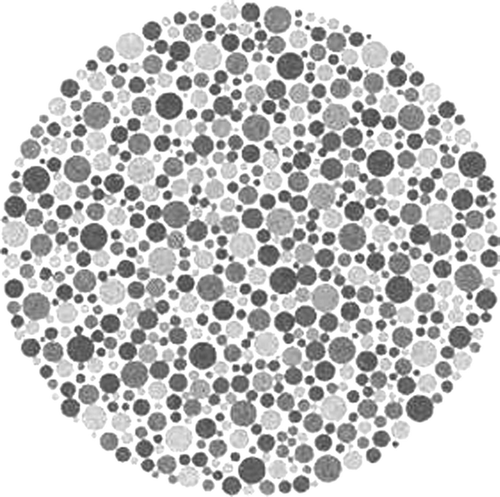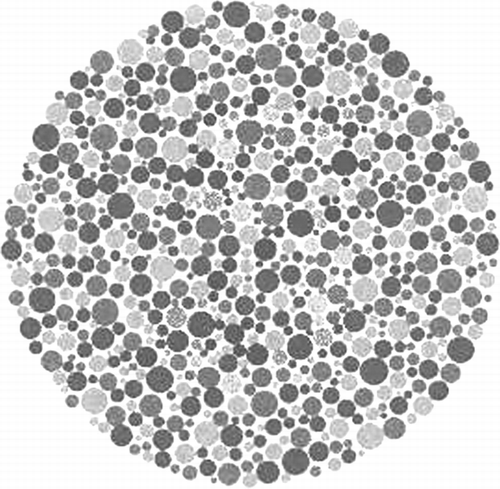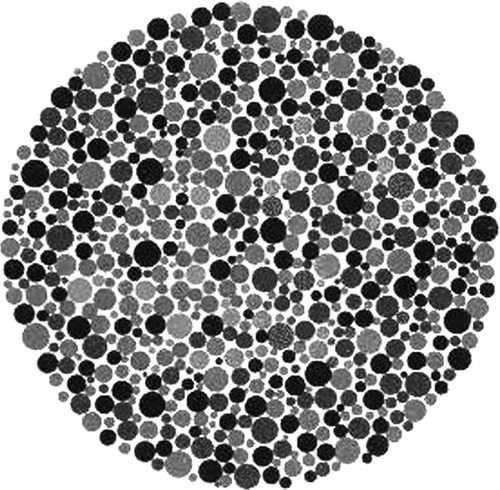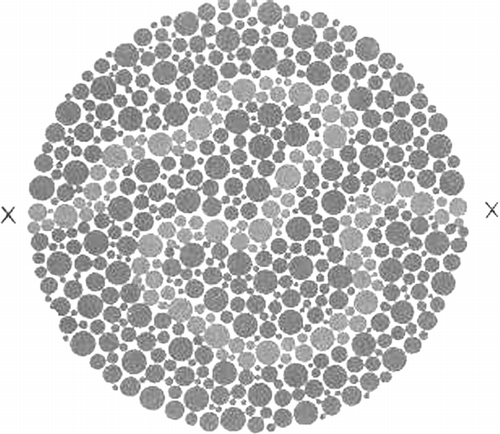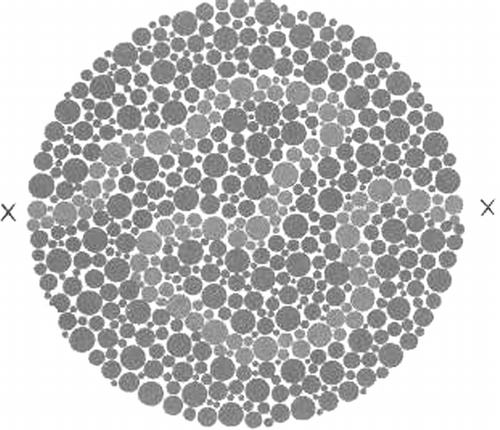Dear Editor, The study was carried out on 941 young healthy men, with ages ranging from 20 to 26 years (average 20.37 years) from January 2002 to the end of 2003 to figure out the prevalence of congenital color blindness. These randomly selected recruits were from different regions of Turkey and were about to be enlisted into the Turkish army. Ishihara's Test for Color Blindness was used to examine the subjects ability to recognize certain numbers in 17 plates. The test was utilized by an ophthalmologist (MC) in the same room with sufficient indirect daylight during morning hours. Plates were viewed binocularly at a distance of 50 centimeters. The number of right answers was noted as the test score for that person. A test score below 7 was considered color blind, and then classified as protananomalia or deuteranomalia.Citation1
Ishihara plates may have limitations, and the possibility exists that in some instances the failure to resolve such stimuli may indicate, not an absence of color resolution, but an inability to detect the critical features in the test. It can therefore be concluded that the Ishihara test is good for screening, but it does not discriminate complete and partial degrees of color blindness with accuracy.Citation2 We did all examinations in the same room with same lighting conditions and only one ophthalmologist interpreted the results.Citation1
Color-deficient individuals characteristically confuse colors that normal people can distinguish. Pseudoisochromatic color plates are patterns of colored and gray dots that reveal one pattern to the normal, another to the color deficient.Citation3 Plates of Ishihara test are read differently by affected and unaffected people. For example, with normal color vision should read the number 8. Those with red-green color vision deficiencies should read the number 3. Also, with normal color vision should read the number 5. Those with red-green color vision deficiencies should read the number 2. If the patient with color blindness tell except 3 for , except 2 for , you should consider malingering color blindness.
For normal color visions should read the number 42. In protanopia and strong protanomalia the number 2 is read, and in mild protanomalia both numerals are read, but the number 2 is clearer than the number 4. In deuteranopia and strong deuteranomalia only the number 4 is read, and in mild deuteranomalia both the number 4 is clearer than the number 2.
Both normal and those with color vision deficiencies can trace the winding line between the two X's in . Normal should trace the line connecting the purple and the orange between the two X's in . Red-green deficiencies should trace the line connecting the purple and the blue-green. The interpretation of these figures may guide the tester for malingering.
Specialized color plates (Hardy-Rand-Rittler, Ishihara) should be used to detect dyschromatopsia. While more time-consuming than the use of color plates, the Farnsworth-Munsell 15 hue and 100 hue tests allow more accurate color vision evaluation by requiring the patient to place shaded pastel-colored blocks in a regular color sequence.Citation3 Another test for red-green defects is the anomaloscope. The observer is asked to match a mixture of red and green wavelengths to a yellow.
Proper diagnosis of color vision deficiencies is not easy because the tests that are cheap and comparatively easy to administer can give misleading results, whereas the tests that give accurate results require quite a lot of training for the tester. It is particularly important not to overdiagnose the deficiency and consequently exclude an individual from an occupation that he could well manage.Citation3
REFERENCES
- Citirik M, Acaroglu G, Batman C, Zilelioglu O. Congenital color blindness in young Turkish men. Ophthalmic Epidemiol 2005; 12: 133–137
- Taylor W OG. An advisory clinic for colour defective children. Trans Ophthalmol Soc UK. 1966; 86: 591–607
- Lakowski R. Theory and practice of color vision testing: a review. II. Br J Ind Med. 1969; 26: 265–288
